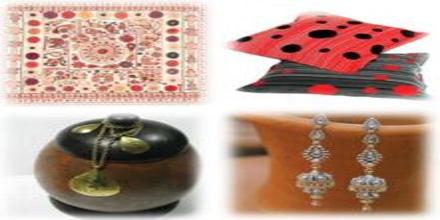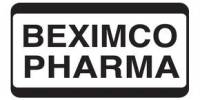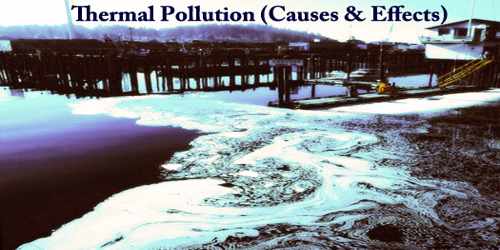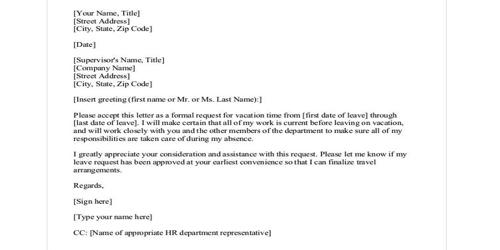Key Success Factors of Aarong
Aarong is an enterprise of BRAC (Building Resources across Community) and it‟s a CSR based handicraft company established in 1978. Aarong means “village fair” Today; Aarong reach has spread beyond Manikganj to the rest of the country. At present Aarong is operating through 9 domestic outlets and one franchised outlet in London wear handloom terracotta retail chains Bangladeshi patterns paid for. Aarong has more than 488 products in their outlets. They have grown into a thriving international enterprise showcasing ethnic to beautiful crafts from silks, cotton, Endi to, bamboo, jute and much more. From a single shop, Aarong has grown into one of Bangladesh’s biggest , with Twelve outlets spread across the major metropolitan areas of the country – in Dhaka, Chittagong, Khulna, Sylhet and Comilla, Narayangonj and one in London, UK. Aarong embraces and nurtures a diverse representation of 65,000 artisans, 85% of whom are women. Aarong also plays the role of protector and promoter of traditional products and designs. It houses an extensive design library where remnants of our rich craft heritage, such as Nakshikatha art and Jamdani , have been widely researched and archived for present as well as future use. Aarong was born out of a need to ensure that the penniless silk farmers of Manikganj were their goods upon delivery, so that they could feed their families. The women Aarong employs are among the countries most disadvantaged. Through Aarong they have been offered a way out of destitution and degradation where before they had none.
History
“To provide a stable and gainful source of employment for the under privileged rural artisans, lift up the traditional identity and the commitment of quality service” On the basis of these principal Aarong started its journey in Bangladesh. Aarong began as a cause – a means to an end for a quiet organization fighting to uphold the dignity of the marginalized. In 1976, when BRAC- a Bangladeshi NGO dedicated to alleviating poverty and empowering the poor, first began encouraging sericulture for women in Manikganj, their only buyers were a few scattered retailers in Dhaka. Weeks, even months would pass between supply and payment, until BRAC intervened. Aarong was born out of a need to ensure that the penniless silk farmers of Manikganj were paid for their goods upon delivery, so that they could feed their families. Today, Aarong’s reach has spread beyond Manikganj to the rest of the country. It has grown into a thriving international enterprise showcasing ethnic wear to beautiful crafts from silks, handloom cotton, Endi to terracotta, bamboo, jute and much more. From a single shop, Aarong has grown into one of Bangladesh’s biggest retail chains, with eight stores spread across the major metropolitan areas of the country – in Dhaka, Chittagong, Khulna, Narayangonj, Comilla and Sylhet and one in London, UK. Throughout Bangladesh and in international destinations, the name Aarong is synonymous with quality, originality and uniqueness. The women Aarong employees are among the countries most disadvantaged.
Through Aarong they have been offered a way out of destitution and degradation where before they had none. And the benefits that they receive extend well beyond simply the wages they earn for their products, since every single woman who works in Aarong-owned production facilities is also a beneficiary of BRAC’s multifaceted development programs. As a support entity of BRAC, a significant portion of Aarong earnings go directly into financing the NGO‟s development programs in healthcare, education as well as economic and social development. Aarong symbolizes fairness in the global village. The organization has identified three basic constraints for gainful employment of the low income and marginalized people in the rural areas: lack of working capital, marketing support and opportunity for skills development. In order to bridge these gaps, Aarong provides a wide range of services to its workers and suppliers:
- Spot payment on product delivery to encourage efficiency and productivity
- Reach out to producers in remote areas to ensure fair value for their efforts
- Marketing communication and information for artisans
- Advances against purchase orders where necessary
- Training & Education in skills development to raise product quality and marketability
- Product Design and Support in Product Development
- Quality Control to increase producer awareness of the importance of quality
These values reflect fair trade principles which have been developed by registered Fair Trade Organizations. It contributes to sustainable development by offering better trading conditions to, and securing the rights of, marginalized producers and workers in Bangladesh
Naming:
The name of the organization “Aarong” is a Bengali word. It means Village Fair. The village fair provides craftsman of all trades a marketplace to display and sell their traditional handicrafts. The naming of Aarong as such upholds the organizations commitment to promote the indigenous goods of our country, which are a part of our rich culture and artistic heritage. “AARONG” means: A: Active: we will execute our plans in an active manner.
A: Appealing: we will make ourselves and our workplace appealing.
R: Reliable: we will carry out our duties in a reliable manner.
O: Outstanding: w will perform in an outstanding manner.
N: Novel: we will always look for novel creative ways of improving everything we do.
G: Genuine: we will be genuine in our thoughts and actions.
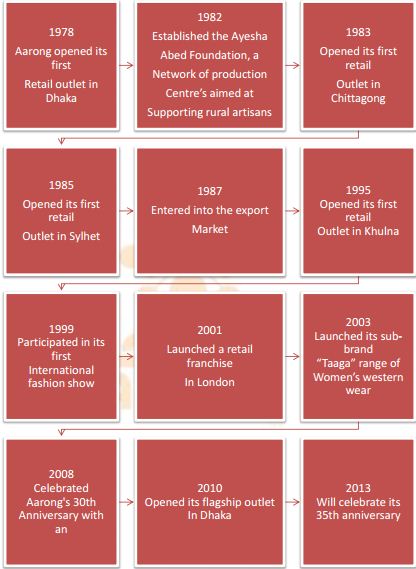
Diagram: Aarong over the years
Today’s Aarong
Today, Aarong serves through 13 retail stores across the country and employs more than 65,000 rural Bangladeshi artisans, of which 85 per cent are women. Aarong believes in setting high standards for the quality and craftsmanship of its products and designs. It sets the trend of blending the traditional with the contemporary, which revitalized consumers‟ interest in Bangladeshi products and designs. At Aarong, we aspire to bring all that we love about Bangladesh to customers around the world. In 2006, and again in 2012, a number of Aarong products received the UNESCO Award of Excellence for Handicrafts. As a fair trade organization, Aarong‟s products are exported to fair trade companies across Asia, Europe and North America.
Aarong is the top trend house in Bangladesh and initiate in promoting the trend industry of Bangladesh. Aarong has established in 1978. Quality, originality and uniqueness are three basic characteristics of Aarong. It is supported by BRAC NGO. Aarong is conducting all its operation with Ayesha Abed Foundation (AAF).
OVERVIEW OF HANDICRAFT
Handicrafts are mostly defined as „items made by hand‟, often with the use of simple tools, and are generally artistic and for traditional in nature. They are also object of utility and object of decoration. Some common types of handicrafts are Textile based handicrafts, Clay, Metal, Jewelers, Woodwork, Stone Craft, Glass and Ceramic.
Handicraft industry of Bangladesh
Handicraft sector in Bangladesh is comprises with small manufacturing units and mostly located in rural areas, operated either by the owner themselves or with the assistance of a small work force of 10-20 people. Most enterprises use traditional techniques with or without the use of tools or simple instruments. Total number of workforce associated with the industry stands approximately over 3 million of which over three quarters are employed in textile, jute goods, wood, leather, cane and bamboo.. Key players in the sector involved in domestic supplies as well as exporters are:
- Non-Government Organization (NGO) exporters of Handicrafts. (e.g. Arong)
- NGO supportive product house (Non exporters)
- Private manufacturers /exporters. (e.g. Various jute good manufacturers)
- Small private manufacturers (Non exporters, e.g. Naksha, Rang, Nabarupa etc.)
Handicraft Products of Bangladesh
There are a great variety of Handicrafts products produced in our country. These are:
- Antiques & Collect
- Bamboo & Wooden Crafts
- Crafts Gifts

Characteristics of handicraft-based Retail Industry
Retail Industry: Small to huge store
The spectrum of Retail Industry is quite wide in nature. Retail serves consumers through a small grocery store to a huge departmental store. Retail Industry is heavily dependent on consumer spending. During economic slow-down consumer spending decreases and it poses threat to the Retail industry. Consumers‟ confidence is one of the key drivers of the industry.
Decline in Small Stores
It is observed that small independently owned stores are gradually losing their foothold in the market place. These stores are generally called “Mom and Pop” stores and they offer limited merchandise to the consumer. These store are facing stiff competition from the large fashion house or superstores and in this process they are closing down their shutters. In many locations the arrival of a superstore has forced nearby independents out of business. It is also true that many small independent outlets still thrive by knowing their customers better and providing them with more personalized service.
Internet and E-Commerce
Internet, the ubiquitous medium has opened a new avenue in front of the Retailers. It has offered an opportunity to the consumers to shop from the home. As it stands today overall Retail sales through internet may not be that significant but gradually it is gaining popularity amongst consumers.
Repositioning of fashion houses
The appeal of big fashion house is in the wane and they are trying to reposition themselves. They are repositioning their product lines to survive in this highly competitive market. For example, a departmental stores which is supplying general merchandise to the consumer is changing themselves to a giant apparel store.
Rise in Discount stores
Discount stores offer money back guarantee, everyday low price etc. to lure customers. They also provide floor help and easy access to the merchandise to facilitate the consumer. Arong comes under this category of Retail house. They give seasonal discounts in their retail house or in other organization of BRAC.
Category Killers
There are Retailers who actually concentrate on one particular product category and grab a lion‟s share of that market and outperform their competitors. They are called Category Killers. The handicraft based retail houses in Bangladesh follow these features. Like Rang concentrates on colors of their product, Shada-Kalo symbolizes the black and white combination of their product and Aaong categorize their product according to tradition and culture of the country. These are the examples of such Retailers who have grabbed a major market share in that product category and they have forced a reduction in the number of players in that product segment. This is also a distinct trend observed in the current Retail market.
Demographic Changes
Retail industry is impacted by the demographic changes. As a result of this change taste of the consumer is undergoing a change and it creates a demand for certain products. Worldwide Retailers are keeping a close watch on this change and they are trying to realign themselves with this change.
Mergers and Acquisitions
Retailers who want to dominate the market place have adopted the strategy of mergers and acquisitions. This is also one of the distinct trends in Global Retail Industry today. Instead of achieving an organic growth Retailers can grow significantly with the help of mergers and acquisitions. This helps them to occupy more shelf space in the market place. As the volume increases they are establishing better control over their suppliers and they are reducing the procurement cost and in that way they are boosting their profitability.
Current Scenario of Aarong
Today, Aarong has grown into a thriving enterprise showcasing ethnic wear to beautiful crafts from hand-woven silks, cotton, endi to terracotta, bamboo, jute, brass, leather and much more. From a small initiative to protect the interest of a rural community, Aarong has grown into one of Bangladesh’s biggest retail chains, with 13 stores spread across the major metropolitan areas of the country – in Dhaka, Chittagong, Comilla, Sylhet, Naryangonj and Khulna. To compliment brick and mortar operations, an e-commerce website has launched to reach global markets. The brand‟s reach has spread throughout the country as it operates 13 AAF centers (with nearly 638 production and sub centers) and works with over a 800 artisan groups and entrepreneurs while ensuring the livelihood of over 65,000 artisans and their families (80% of whom are women), thus directly benefiting 320,000 people. In addition, through the profits it generates and redistributes through BRAC‟s development programs, Aarong benefits hundreds of thousands more people as well as provides a service to consumers.
The brand generates a strong emotional connection and loyalty while bringing people together to showcase the best that Bangladesh‟s highly skilled artisans have to offer. In addition to Aarong‟s strong brand awareness and presence as the leading fashion house in Bangladesh, a key point of differentiation is the department store level product range and destination location status. Aarong is a one-stop shopping location from clothing to household items, gifts and fashion accessories to children‟s toys. Aarong outlets have unique and convenient features such as parking areas and in-store cafes to round out the shopping experience.
Aarong‟s customers are not only the urban and middle to upper class Bangladeshis and expatriates but also include Bangladeshis living abroad who are looking for products that connect them to their country and roots and represent their identity as a Bangladeshi.
Customers also include foreigners visiting Bangladesh, as Aarong is a must visit destination that has a prominent mention in The Lonely Planet guide to Bangladesh. It is a place to pick up a piece of Bangladesh with a souvenir to remind visitors of the culture, vibrancy and warmth of the people and the country.
The unique positioning of Aarong as a „Bangladeshi Brand of Pride‟ is built on its visionary and pioneering role in preserving, promoting and popularizing Bangladeshi crafts and the values of innovation, integrity, empathy and continuous learning that drive the brand to this day.
Values & Objective of Aarong
Aarong values
- Innovation: BRAC-Aarong has been an innovator in the creation of opportunities for the poor to lift themselves out of poverty. We value creativity in programme design and strive to display global leadership in groundbreaking development initiatives.
- Integrity: BRAC-Aarong value transparency and accountability in all our professional work, with clear policies and procedures, while displaying the utmost level of honesty in our financial dealings. We hold these to be the most essential elements of our work ethic.
- Inclusiveness: BRAC-Aarong are committed to engaging, supporting and recognising the value of all members of society, regardless of race, religion, gender, nationality, ethnicity, age, physical or mental ability, socioeconomic status and geography.
- Effectiveness: BRAC-Aarong value efficiency and excellence in all our work, constantly challenging ourselves to perform better, to meet and exceed programme targets, and to improve and deepen the impact of our interventions.
Objectives
BRAC-Aarong takes a holistic approach in conceptualizing and developing each of its enterprises. As BRAC enterprises have expanded from program support mechanisms to surplus generating enterprises with financial and social missions, each enterprise has ensured that it complying the four fundamental objectives of a BRAC-Aarong enterprise:
- Creating job opportunities
- Generating surplus for BRAC in order to minimize donor dependency
- Ensuring long-term support and contribution toward the sustainability of BRAC‟s development interventions such as microfinance, education and skills development etc.
- Becoming viable investments in the long run in order to act as „hedge‟ against future liquidity.
Aarong’s vision
Aarong‟s Vision is to create a world free from all forms of exploitation and
discrimination where everyone has the opportunity to realize their potential.
Aarong’s mission
Mission of BRAC-Aarong is to empower people and communities in situations of poverty, illiteracy, disease and social injustice. Our interventions aim to achieve large scale, positive changes through economic and social programs that enable men and women to realize their potential.
Strategic intend of Aarong being Social enterprise
Aarong – BRAC’s flagship social enterprise BRAC established Aarong, its handicraftmarketing branch, in 1978. The initiative was dedicated to creating economic opportunity for disadvantaged artisans and rural women through the revival and promotion of their traditional handicrafts. Today Aarong has become the foundation for independent cooperative groups and family-based artisans to market their craft, both within Bangladesh and internationally.
The project currently has nine retail outlets and supports more than 65,000 artisans in 2,000 villages across Bangladesh. An additional 25,000 independent cooperative groups and traditional family-based artisans also sell their crafts through Aarong. Potters, brass workers, jewelers, jute workers, basket weavers, handloom and silk weavers, wood carvers, leather workers and other artisans from all over the country come to Aarong for marketing and support services .Every woman who works in Aarong-owned production facilities is also a beneficiary of BRAC’s multifaceted development programs with access to microcredit to develop income-generation activities in addition to their regular wages. As further evidence of BRAC’s successful business model, Aarong has seen an average annual business growth of 40 per cent in the past four years. While many local export-orientated businesses have suffered as a result of the current world economic climate, Aarong’s market, which is 95 per cent domestic, has grown by an estimated 12 per cent this year. Built on the strength of its strong domestic market, the Aarong label has become Bangladesh’s leading fashion brand.
The sheer scale of BRAC’s reach and reputation within Bangladesh has been part of the reason the Aarong project has been so successful. The brand has a strong national identity and customers are proud to shop there. They also trust BRAC’s sustainable business practices that have evolved through a model of trial first before scaling up. Aarong has also successfully found a niche in the retail fashion space. Prior to the establishment of Aarong’s retail outlets, shopping for quality textile products was either through the backstreets of local markets or in up-market boutiques inside hotels. It is the closest shopping experience to a department store in Bangladesh, offering a range of products ranging from clothing, shoes, jewelry and accessories to furniture and home wares. So, although the brand’s marketing includes billboard advertising and fashion shows within the country, it is really the elements of convenience, range and quality of product, combined with a strong national identity, that have effectively become its marketing tools .The value of Aarong to the creative industries in Bangladesh is not only economic. The success of the retail brand has inspired consumer interest in indigenous Bangladeshi design through blending the traditional with the contemporary in a manner that has won instant consumer appeal. Aarong’s product designs focus on the diverse types and textures of crafts and patterns that have been passed along from generation to generation among weavers and artisans in craft hubs around the country.
Aarong also plays a role in protecting and promoting traditional Bangladeshi products and designs through its extensive design library where remnants of the country’s rich craft heritage, such as Nakshikantha art and Jamdani patterns, have been widely researched and archived.
Key success factors Of Aarong being social enterprise
Aarong develops strategic plans. It carefully creates a vision of its future and the strategies needed to get there. In Aarong experience, there are 5 critical factors that would ensure its strategic plans are successfully implemented.
- Engagement
Strategic Planning is a process not an event. A key element in the process is the engagement of all levels of staff throughout the organization. Staff engagement generates additional input and helps build their commitment to the end plan. It is essential to involve employees in the planning of strategy and direction for the organization. Employee’s input will:
Provide insight into issues, challenges, concerns, and opportunities which may not have been known or fully understood.
Ensure their “buy-in” to help execute the strategies.
The senior management team will not execute the strategies – staff will. Aarong Engages its staff and its strategy execution success rate would increase dramatically and make it‟s the most successful social enterprise.
- Communication
Strategic Planning processes are successful when a bottom up and top down communication approach is taken. It starts off with a communication to all levels of employees informing them that a Strategic Planning process will be undertaken. It includes how they will be involved in this process. This is the bottom up communication. Employees will provide input to the strategic planning process through feedback surveys, focus groups, meetings, etc. regarding their ideas for organizational direction, etc.
It is followed by the top down communication. At Aarong, Senior management would share the strategic plan with employees. They communicate to all employees how their engagement will help ensure success in the execution of these strategies.
- Innovation
Aarong believes in innovation of new products or deliver a new service or re-structure a department. Recently Aarong has introduced new product in their department that is maternity wear for women. They also start to give innovative service on online shopping.
- Project management
Once the strategic plan is together, there are two critical elements related to project management. One is to identify the projects that are required to ensure success in the execution of each strategy. Another is to develop a prioritization of all these projects to ensure the high priority ones have the proper resourcing to ensure success. This requires a high involvement and commitment on the part of employees to spend the time required on the projects.
Aarong follows the high level of involvement of employees ensures that they understand the strategic plan. It increases their level of commitment to ensure the strategy is successfully executed because they understand how their work and the work they‟re completing on the project helps the organization to realize some or all of one of their key strategies.
- Culture
Organizational Culture is the commonly held attitudes, values, beliefs and behaviors of its employees. The culture of Aarong is as unique and diverse as an individual’s personality. If the employees of an organization believe that change is something to be feared and avoided, then change implementation is often reactive and haphazard. If the employees believe that all change should be aggressively implemented “from above”, then change is seldom supported.
However, if the employees of an organization believe that change is worthwhile and everyone’s responsibility; then change and growth occur with relative ease. These are the culture of Aarong that continue to excel in their industry.
It is followed by the top down communication. Senior management share the strategic plan with employees. They communicate to all employees how their engagement will help ensure success in the execution of these strategies.
Aarong’s value chain
Aarong‟s value chain is the movement of materials as they flow from their source to the end customer. The whole value chain of Aarong includes purchasing, manufacturing, warehousing, transportation, customer service; demand planning, supply planning and Supply Chain management. It is made up of the employees, activities, information and resources involved in moving a product from Aarong‟s supplier to its customer.
How Aarong’s Supply Chain Management System is build
Aarong‟s supply chain management system is a group of things working together. Computers, fax machines, data storage system, operating personals, procedures for the employees and the most vital components of Aarong‟s supply chain management system are its telecommunication system.
Cell phones helped Aarong to create a communication network with every suppliers and transportation partners across the country. All this components work together to provide information to collect products, manage the suppliers, to provide services, create report etc.
Chain management of Aarong but the main value chain management software is developed by Aarong. This software is used for both value chain planning and to help them to execute the supply chain steps. Aarong has hired trained professionals to operate its supply chain management system and keep updating Aarong is value/ supply chain management system can be divided into two systems. Both of this system is vital for Aarong is business.
Aarong’s value Chain Management Process:
- Planning: Aarong‟s supply chain management planning starts at the top of the management. Management tries to balance out the demand and supply to meet Aarong‟s sourcing, production, delivery and return requirements.
- Sourcing: Aarong has large pool of sources to meets it supply. As the demand requires suppliers come up with raw materials and goods. Then it creates a product which we can exploit.
- Making: Co-operatives comes up with final goods and they deliver them to the final processing section of Aarong. The goods or products are ready to use for the customers.
- Delivering: Aarong is delivering process is managed by its own transportation. Aarong directly distributes its product to the consumers. Their job is to distribute shipments properly. “Just-in-time” is followed in delivery process.
- Returning: Return process is consisting of product returns and post-delivery customer support which is done by Aarong. Generally Aarong obtained their products to their consumers within 30days. It‟s also includes Aarong‟s return process.
- Logistics: Aarong‟s top level management plans, supportive relation to their consumers and control of all other factors that have an impact on the supply chain.
PESTEL analysis on Aarong
A PESTEL analysis is a framework or tool used by marketers to analyse and monitor the macro-environmental (external marketing environment) factors that have an impact on an organisation. The result of which is used to identify threats and weaknesses which is used in a SWOT analysis.
Political Factors
These are all about how and to what degree a government intervenes in the economy. This can include – government policy, political stability or instability in overseas markets, foreigntrade policy, tax policy, labor law, environmental law, trade restrictions and so on.
It is clear from the list above that political factors often have an impact on organizations and how they do business. According to political agreement of Bangladesh government Aarong is now export their product in UK and USA. Organizations need to be able to respond to the current and anticipated future legislation, and adjust their marketing policy accordingly.
Economic Factors
Economic factors have a significant impact on how an organization does business and also how profitable they are. Factors include – economic growth, interest rates, exchange rates, inflation, disposable income of consumers and businesses and so on.
These factors can be further broken down into macro-economic and micro-economic factors. Macro-economic factors deal with the management of demand in any given economy. Governments use interest rate control, taxation policy and government expenditure as their main mechanisms they use for this. Aarong concentrates on economic factors and they ask customer for tax through Vat with the actual price of the product.
Micro-economic factors are all about the way people spend their incomes. This has a large impact on B2C organizations in particular.
Social Factors
Also known as socio-cultural factors, are the areas that involve the shared belief and attitudes of the population. These factors include – population growth, age distribution, health consciousness, and career attitudes and so on. These factors are of particular interest as they have a direct effect on how marketers understand customers and what drives them. Aarong follows the social factor and by concentrating on that, it determine its target customer and marketing strategies.
Technological Factors
We all know how fast the technological landscape changes and how this impacts the way we market our products. Aarong established online shopping for distributing their product to their target customer. It follows social media as well as electronic media for communicating with their target market as well as for their promotional activities.
Environmental Factors
Aarong considers environmental factor important due to the increasing scarcity of raw materials, pollution targets, doing business as an ethical and sustainable company, carbon footprint targets set by governments. These are just some of the issues marketers are facing within this factor. More and more consumers are demanding that the products they buy are sourced ethically, and if possible from a sustainable source.
Legal Factors
Aarong follows legal factors include – health and safety, equal opportunities, advertising standards, consumer rights and laws, product labelling and product safety. It is clear that companies need to know what is and what is not legal in order to trade successfully. If an organization trades globally this becomes a very tricky area to get right as each country has its own set of rules and regulations.
It is clear from the above observation that the political factors have little impact on Aarong to export the products where economic factors have a huge impact on the organization. Aarong highly concentrates on social factors to determine its target customer and marketing strategies. Technologically Aarong is on indifferent condition where it highly concentrates on environmental factors. At the same the organization is highly concentrated on the legal factors.
